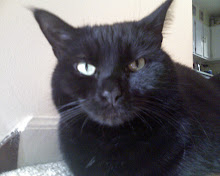So I've been playing around with Antares' Harmony Engine software, a plugin which takes audio input and harmonizes with it. In addition to basic interval harmonies, it also responds to MIDI input to create lovely 4-part harmonies.
Of course, being the crazy dude I am, I immediately thought, "Oh exploitable!" Since it takes any audio input, you can use it on a wide variety of sounds. The first thing I thought up was drums, but it turns out unpitched sounds don't work so well. Speech was alright, but nothing to write home about. Then I thought of something: What if I used my keyboard as both the MIDI and audio signal?
For this first test, I used a simple percussive organ sound monophonically. Even though the basic tone is still there, you can hear a delightfully glitchy and unpredictable effect on the higher and lower ranges of tones. The effect is more pronounced when you turn off the plugin's velocity sensitivity, and I recommend muting the input signal in the plugin to ensure you get the full effect. Anyway, monophonic is cool, but what about polyphonic sounds?
Gloriously glitchy! Harmony Engine pitch-shifts the input sound to each MIDI note, but when that input sound is already a harmony you end up with each individual voice as a complete chord. But the bit-rate isn't high enough to fully shift everything perfectly, so the engine twitches between notes and basically just loses it. One interesting thing to try when the velocity sensitivity is off is to play a chord at full volume, hit the sustain pedal to keep the audio going into the plugin, then play with a very light touch to get the MIDI input without adding to the sustained tone.
Since the effect is so unpredictable, you may need to bounce a track to disk to preserve a particular sound for later use. (Unless, of course, that unpredictability is what you're after, in which case just go for it.)
One note: In these videos you can't hear the interesting panning effect that occurs when the engine switches between voices. It's actually even more pronounced in the first sample because each vocal line will bounce between different panning locations rather than staying with one like a normal choir recording. Even though it's not natural-sounding, it does liven up the stereophonic sound space quite a bit.
Subscribe to:
Post Comments (Atom)

No comments:
Post a Comment